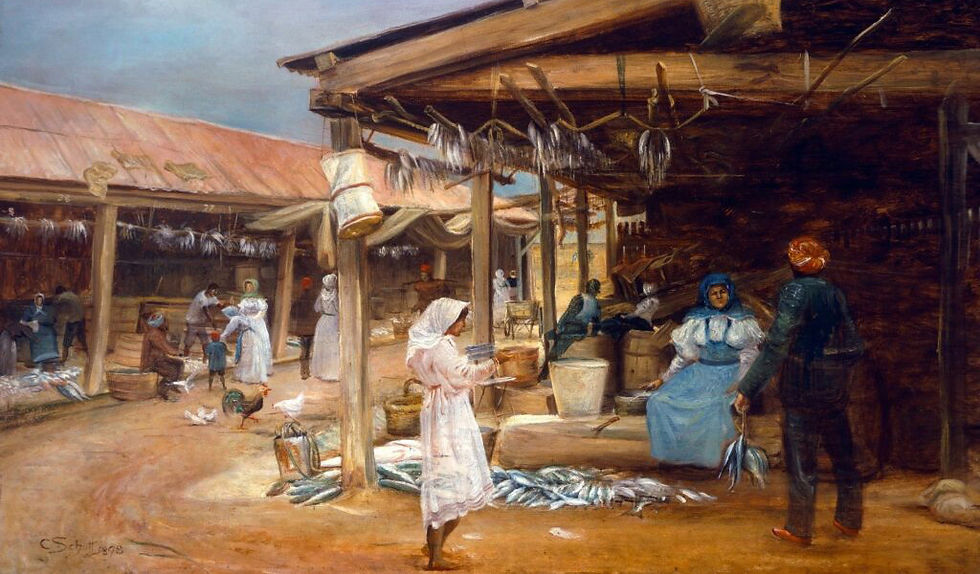GUARDIANS OF ZIMBALI ESTATE
- Life & Style

- Jul 7
- 4 min read
Brendan Smith and Zamani Gwala have a vision for a wilder tomorrow
Zimbali Estate, on the lush KwaZulu-Natal North Coast, is often praised for its harmonious blend of luxury and natural splendour. But beyond the manicured fairways and architecturally striking homes lies a deeper, quieter narrative – one of ecological stewardship and visionary foresight, led by two men whose influence runs deep through the very roots and skies of Zimbali Estate.
Words: Elle Matthews

Brendan Smith, the Estate’s Environmental Manager, and Zamani Gwala, its Environmental Officer, form the dynamic heart of Zimbali Estate’s environmental vision. Together, they have transformed the estate from a residential haven into a beacon of conservation excellence, and are shaping a legacy.
At first glance, Brendan and Zamani could not be more different in demeanour, but they have a deep partnership rooted in a shared commitment to the land and a profound, unwavering belief that Zimbali Estate’s true wealth lies in its biodiversity and natural heritage. And more importantly, a vision that sees environmental care as a way of life. This ethos is evident in their hands-on approach to the estate’s environmental challenges, where they view themselves not merely as caretakers but as integral participants in the ecosystem.
One of the most compelling aspects of Brendan and Zamani’s work is their stewardship of one of the estate’s most iconic inhabitants – the African crowned eagle. Once plentiful across South Africa, crowned eagles have faced mounting pressures from habitat loss and human encroachment. But at Zimbali Estate, they have found sanctuary. While a pair of crowned eagles have been successfully breeding at a Zimbali Estate nesting site for years, under Brendan and Zamani’s guidance, the estate has evolved into a leading site for crowned eagle monitoring and protection.

Their efforts go far beyond passive protection. The Environmental Team
has also partnered with local ornithologists and implemented educational
signage throughout the estate to deter residents and visitors from unknowingly habituating juvenile crowned eagles. The estate’s landscaping policies have even been adapted to protect eagle prey species and minimize unnatural disturbances – a move rare among residential estates.
But Zimbali Estate’s environmental triumphs extend far beyond the forest canopy. Brendan and Zamani have undertaken the formidable challenge of restoring the coastal dunes that frame Zimbali Long Beach, the natural fortifications that had been worn down by years of erosion, invasive species, and unchecked human movement. Recognising that dune systems serve as frontline defences against the effects of climate change, they introduced a thoughtful blend of indigenous vegetation, erosion control techniques, and carefully designed access pathways. Their efforts are steadily coaxing the dunes back to life, restoring the sculpted contours that once defined this stretch of coastline.
Encircling the golf course, another dimension of their vision unfolds in the form of a grasslands restoration project, an initiative that weaves ecological tradition with innovative stewardship. Historically, KwaZulu-Natal’s landscapes were maintained by seasonal burns, a process that fostered biodiversity by clearing aged vegetation and encouraging new growth. This rhythm had long been absent from Zimbali Estate’s land management, until Brendan and Zamani reintroduced controlled burns with precision and care.
The move was bold, demanding not only technical expertise but a deep
understanding of the land’s natural cycles. Their efforts have ushered in an ecological renaissance, marked by the reinvigorated growth of rare and regionally significant flora species. The reappearance of native wildflowers, the flutter of pollinators, and the quiet scurry of small mammals all speak to a landscape in revival, and a living testament to the team’s measured, regenerative approach.
Their work is grounded in data, but their motivation is deeply human. In the recently released 2024 State of Environmental Report, the pair outlined a vision of Zimbali Estate that is not merely sustainable but regenerative – a living system where biodiversity thrives alongside human presence. The report is both a triumph and a call to action, documenting improvements in species counts, reduced erosion rates, and increased community engagement with conservation programmes.
Perhaps the most striking facet of Brendan and Zamani’s work is not merely the scope of their accomplishments, but the quiet harmony with which they carry them out. Their collaboration is built on continuous learning and mutual respect, and an evolving dialogue that deepens both their understanding and their impact. More than a division of labour, their partnership is a shared purpose made manifest.

It is this shared sense of purpose and unified vision that has positioned Zimbali Estate at the forefront of estate-based conservation in South Africa. While many estates flirt with sustainability, few embed these principles so comprehensively into the fabric of their design, governance, and daily life. At Zimbali Estate, ecological care is not an afterthought, it is the foundation. Increasingly, people are drawn to Zimbali Estate not only for its way of life, but for the deeper values it upholds and the regenerative future it champions. Because what it represents is hope – a rare and precious commodity in the face of accelerating environmental degradation.
Through their partnership, Brendan and Zamani have created more than an environmental programme. They’ve created a story. One of care, resilience, and foresight. It’s a story written in eagle cries, dune grasses swaying in the coastal breeze, and wildflowers reborn in smoke-cleared fields. A story where two men, guided by a shared vision, remind us all that progress isn’t always measured in concrete and steel, but in the return of a bloom, the flap of a wing, and the quiet confidence of knowing you’re on the right path.
In Zimbali Estate, the future is greener, because Brendan Smith and Zamani Gwala are already there, walking it.








Comments